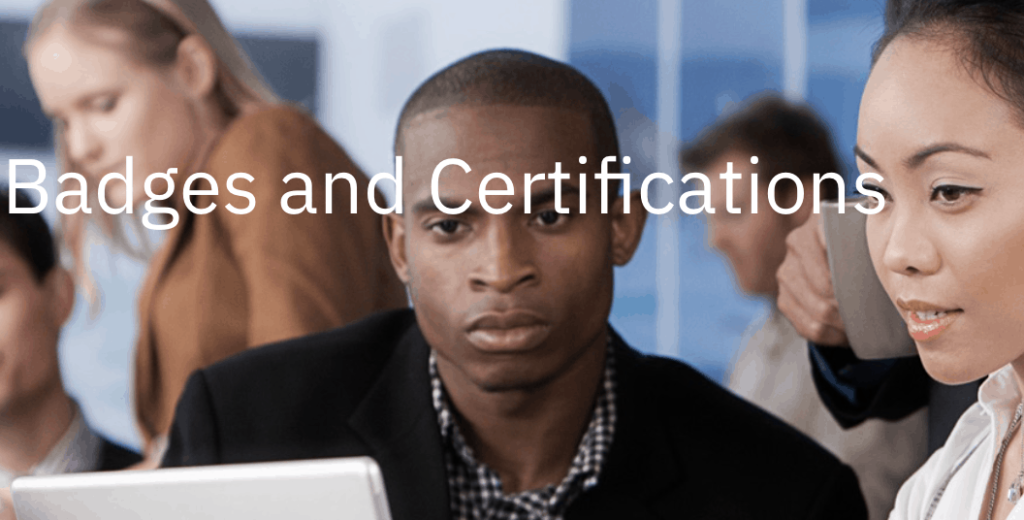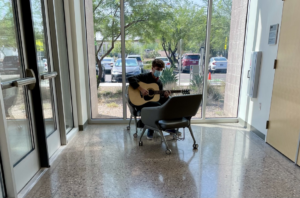Digital Credentials: A Better Way to Capture and Communicate Learning

For hundreds of years, we’ve relied on time as the primary measure of learning. Sit through a class and get credit. Accumulate enough credits and you get a degree. But a list of classes passed (a transcript) tells little about what a learner knows and can do. Add grades and the reputation of an institution and you get a little signaling value but the standard high school or college degree is a terrible communication of capabilities.
There is an invention opportunity to better credential units of learning, to open up individual learning pathways, to better communicate capabilities, and to reduce friction in talent transactions.
The pandemic is accelerating this shift to verified credentials. Enrollment in short-term credential classes increased by 70% over last year while freshman college enrollment dropped by 16%.
There are six opportunities to better capture and communicate learning.
Better Badges. Almost a decade ago, the open badge initiative exploded and suddenly anyone could award a badge for anything. It expanded digital credentialing and improved signaling for learners but it came with a wide variability in quality–some credible demonstrations of priority skills and some less so.
K-12 education has been a leader in badges–usually called microcredentials–in professional learning. Digital Promise is a nonprofit leader in hosting and issuing more than 450 microcredentials that develop and verify important educator skills.
Bloomboard powers the microcredentials that power the professional learning system at Harmony Public Schools–a great example of a well designed comprehensive talent development system
In partnership with badging platform Credly, IBM has been a leader in issuing digital credentials that capture important skills with trusted assessments.
Better badged units of study probably won’t replace courses as the ‘shipping container’ of instructional design anytime soon, but they will continue to expand options for learners outside formal education particularly in workforce development.
And as more providers like IBM and Khan Academy issues verifiable badges, more learners will be able to back up skill assertions with evidence and receive credit for prior or outside learning from their high school or college (perhaps with some encouragement from policymakers).
Better Degrees. Interest in skills-based hiring and tangible value for college degrees has lead many institutions to make current degree programs better demonstrations of valuable skills.
Online higher education giants SNHU and WGU have been leaders in back mapping courses and degrees from job critical skills. They’ve made courses consistent in content and have incorporated assessments that validate skills.
Better Transcripts. Mastery Transcript Consortium is a network of more than 330 of the most innovative schools in America that have banded together to issue more meaningful transcripts that cumulate demonstrations of mastery rather than relying on a list of classes and grades.
Greenlight Credentials helps north Texas high school scholars build and permission a digital profile to employers and postsecondary institutions. The extended transcript includes traditional and new forms of evidence of learning with supplements that help learners tell their story.
Better Records. With learners accessing multiple providers inside and outside degree programs and learning for life across a range of employment experiences, portable interoperable records are becoming more important.
In September, Walmart and Salesforce enlisted Badgr to help develop pilot solutions that could empower over two million workers to capture and communicate what they are learning. The system maintains a record of the skills required to earn each badge and because the data is machine-readable and interoperable, it offers the learner portability across institutions and employers.
Better Translation. To promote consistent skill definitions and system interoperability, the giant competency-based nonprofit university WGU organized the Open Skills Network. Launched in September, OSN already has four dozen corporate and university partners. It promotes a more equitable, skills-driven labor market by matching talent with career opportunities through a common skills language,
Also behind the scenes are translators like MatchMaker Education Labs whose inference engine can translate one set of competencies into another or reassemble learning assets developed for one system to the framework of another system with a new set of competencies.
Better Incentives. “I’m also really interested in incentives built into goal attainment along learning pathways,” said Byron Sanders, CEO of Big Thought in Dallas. He sees the potential for badge attainments to unlock internships, stipends, scholarships, and school credits.
A blockchain record, like Greenlight Credentials, can automatically execute contracts that make attainment incentives available to learners. Learners could automatically have new credentials highlighted on a LinkedIn profile where it becomes discoverable and machine-readable.
If a learner gave a group of employers (like North Texas health providers) access to their Greenlight Credentials profile, they could automatically receive work-based learning and employment offers.
Credentialed demonstrations of mastery will eventually replace most conventional grading and transcripting. In some places, that will unlock opportunities to learn from multiple providers creating faster, cheaper, more flexible, and personalized learning pathways. Credentials will become better signals of capabilities and, as they become more portable, will make employment more equitable.
Better credentials won’t tell the whole story. Learners should also be collecting artifacts of their best work and honing their storytelling skills so they can make the best case for themselves–by showing, telling, and sharing verified credentials.
For more, see:
- Invention Opportunity: Measuring What Matters
- Eight Ways New Schools Innovate
- Your School Has Left the Building
Stay in-the-know with innovations in learning by signing up for the weekly Smart Update.
To help inform and deliver new agreements, new practices and new tools Getting Smart and eduInnovation are exploring the Invention Opportunity thanks to support from the Walton Family Foundation and the Bill & Melinda Gates Foundation. The findings and conclusions contained within are those of the authors and do not necessarily reflect positions or policies of the foundations.







0 Comments
Leave a Comment
Your email address will not be published. All fields are required.